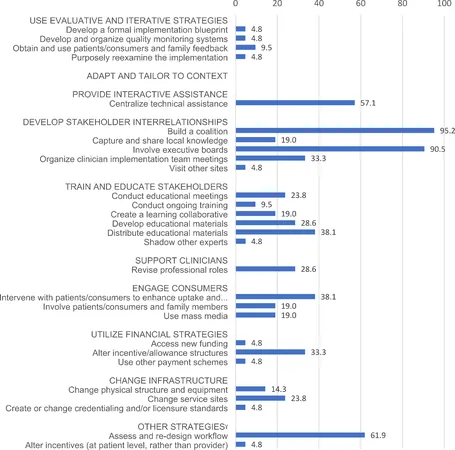
Tracking Modifications in Implementation Strategies: Insights from the SNaP HIV Intervention Trial in Vietnam
2024-10-26
Author: Wei
Adaptation in public health interventions, particularly in the domain of implementation science, is crucial for optimizing effectiveness in diverse contexts. Defined as the deliberate changes made to an evidence-informed intervention to better align it with a new setting, adaptation encompasses both proactive adjustments prior to implementation and reactive modifications in response to unforeseen challenges. This flexibility ensures that evidence-based interventions (EBIs) maintain fidelity to their core principles while accommodating the unique needs of various populations and settings.
Implementation strategies—methods used to bolster the adoption and sustainability of clinical practices—also require regular modification to address the shifting demands of different environments. Creating and refining these strategies necessitates a thorough understanding of local barriers and a willingness to adjust approaches based on ongoing feedback and outcomes.
A significant focus of recent studies centers on populations most affected by HIV, such as people who inject drugs (PWID). In Asia, particularly Vietnam, this demographic faces a high prevalence of HIV—recent reviews indicate rates around 29% among PWID in the country. To confront the complexities of this issue, a hybrid type III randomized controlled trial known as SNaP was initiated from May 2020 to November 2023. This trial sought to expand integrated Systems Navigation and Psychosocial Counseling interventions for PWID at various HIV testing sites across Vietnam.
The SNaP study, encompassing 42 sites in 10 provinces with notably high rates of PWID, compared a standard multifaceted implementation approach against one tailored to specific site needs. By recognizing local determinants affecting the implementation of the intervention, researchers aimed to determine how best to deploy resources and adapt strategies effectively.
Through careful tracking of modifications to implementation strategies, researchers aimed to generate a clearer understanding of what worked, what didn’t, and how adaptations impacted outcomes. This tracking involved detailed documentation of who made changes, the context prompting adjustments, and the way these changes were executed. Leveraging frameworks such as the RE-AIM and FRAME allowed for systematic recording of these modifications, thus extending the knowledge base for future interventions.
The trial faced numerous challenges, including navigating the complexities of the COVID-19 pandemic, which significantly disrupted routine HIV testing and participant recruitment processes at various sites. Site staff often operated under heavy workloads, balancing intervention implementation with pandemic-related responsibilities. Despite these obstacles, a total of 570 meetings with site staff enabled the collection of valuable data on the application and efficacy of the tailored strategies.
Throughout the SNaP trial, 27 distinct implementation strategies were identified and employed, showcasing a need for adaptability at different stages of the project. These strategies, categorized per the Expert Recommendations for Implementing Change (ERIC) taxonomy, highlighted the vital roles of stakeholder engagement and community support in successful implementation.
As findings emerged from the trial, it was observed that the number of utilized implementation strategies diminished over time. This decline prompts further investigation into which strategies yield the most benefit in sustaining intervention effects long-term. Despite initial enthusiasm, many strategies appeared to be used only once or adapted beyond their original intent, revealing the importance of ongoing support and training for site staff to foster continuous engagement with the SNaP intervention.
In conclusion, the tracking of modifications to implementation strategies within the SNaP trial emphasizes the necessity of flexibility and responsiveness in public health initiatives, particularly in low-resource settings. This study not only illustrates the logistical and adaptive challenges faced but also serves as a guideline for future researchers seeking to implement and evaluate similar health interventions. As the global health landscape continues to evolve, learning from such trials will be pivotal in shaping effective responses to pressing health issues like HIV among vulnerable populations.


 Brasil (PT)
Brasil (PT)
 Canada (EN)
Canada (EN)
 Chile (ES)
Chile (ES)
 España (ES)
España (ES)
 France (FR)
France (FR)
 Hong Kong (EN)
Hong Kong (EN)
 Italia (IT)
Italia (IT)
 日本 (JA)
日本 (JA)
 Magyarország (HU)
Magyarország (HU)
 Norge (NO)
Norge (NO)
 Polska (PL)
Polska (PL)
 Schweiz (DE)
Schweiz (DE)
 Singapore (EN)
Singapore (EN)
 Sverige (SV)
Sverige (SV)
 Suomi (FI)
Suomi (FI)
 Türkiye (TR)
Türkiye (TR)